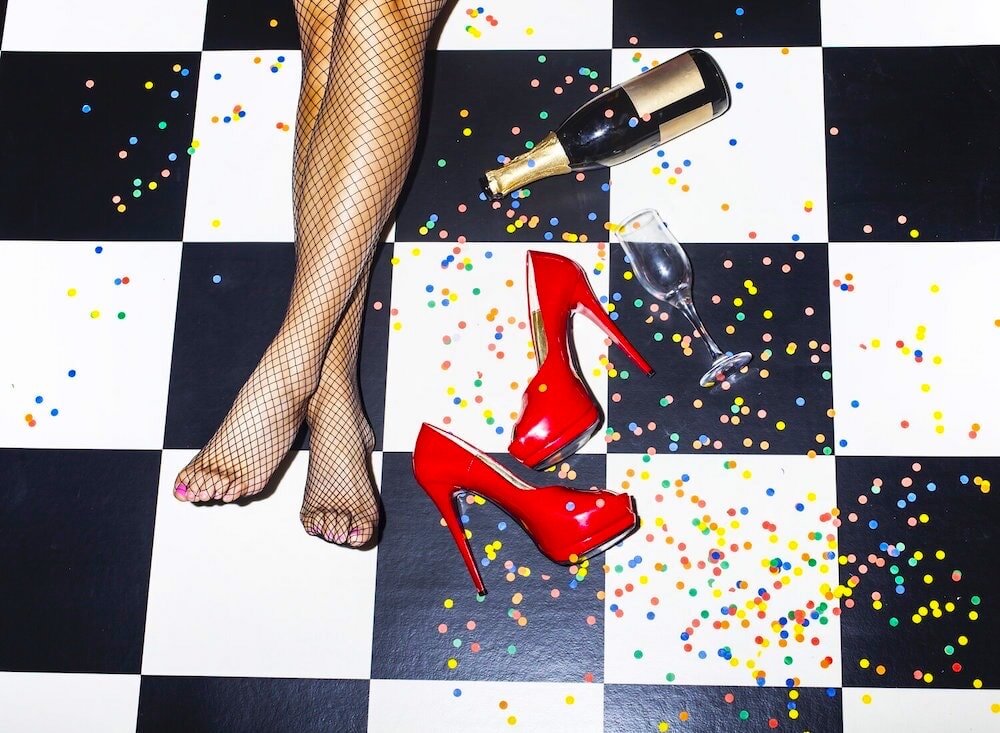How to wear your heels to the holiday party AND keep them on all night!
There are many types of dressy shoes that you can wear to your holiday party, but let's face it...women love heels! And women should be able to wear the shoes they love. However, according to the American Podiatric Medical Association 71% of women who own heels experience pain from wearing them. I’m Dr. Nelya Lobkova, TriBeCa’s top podiatrist, and here’s my advice on how to wear them and be comfortable enough to keep them on all night.
When we wear very high heels (above 3 inches) the natural fat pad in the ball of the foot is displaced towards the toes minimizing the shock absorption under the ball of the foot. Over time this displacement could become permanent. As we age we also lose the natural fat in our feet due to fat pad atrophy. To increase the padding directly under the bony ball of the foot, you can temporarily use a gel liner (bought over the counter) that is cut to fit the front of the pump. However, a more effective replacement of padding in the foot is injectable filler, a service provided at Step Up Footcare, our TriBeCa based practice. When we walk in heels, we must also be aware of our gait. The tendency is to lean backwards which may cause falling and injuries. The ideal posture is slightly relaxed at the knees with a slight forward tilt.
Here are some recommendations for buying the right heels and wearing them all night long:
Look for pumps with a platform under the ball of the foot. The platform acts as a shock absorber to decrease the stress on the ball of the foot which can cause pain and injuries, such as stress fractures, after a long night of wearing high heels.
Look for heels with a strap around the ankle or add a strap to your current heels. The strap provides extra stability in the ankle as well as the awareness that the ankle is supported allowing you to wear heels for longer and minimize the chance of getting an ankle sprain.
Look for chunky heels, rather than stilettos, because they provide more stability for the ankle as well. If you plan on buying a heel that's above 3 inches, I would recommend going with a chunky heel. Remember, heels could be fun geometric shapes too; they don't have to be square!
If there is pain in the ball of the foot, including people who have bunions, hammertoes, or neuroma/neuritis pain, an open or a wider toe box, instead of a narrow, triangle toe box is recommended. This will diminish crowding in the front of the foot.
If there is pain in the arch or heel (plantar fasciitis or bone spurs in the heel), a heel height of one inch or higher is actually recommended because the fascia/arch is relaxed when the heel bone is raised.
Sometimes shoes become uncomfortable in the back of the foot where the bottom of the Achilles tendon meets the shoe.This occurs from a prominent bump in the heel bone which rubs up against the back of the shoe causing the body to make a protective sac of fluid called a bursa. For this problem, an open-back heel that is above 1 inch actually takes pressure off the bump.
Finally, there are insoles or orthotics that could be made for heels, however, they must be custom-made in order to ensure a good fit. In addition, there are modifications that can be added to accommodate different conditions such as bunions, arthritis, and inflammatory conditions like plantar fasciitis. The insole must be slim and fit well inside the heels. I recommend speaking to an experienced podiatrist to make sure an orthotic is right for you and there is no underlying problem that needs to be addressed.


